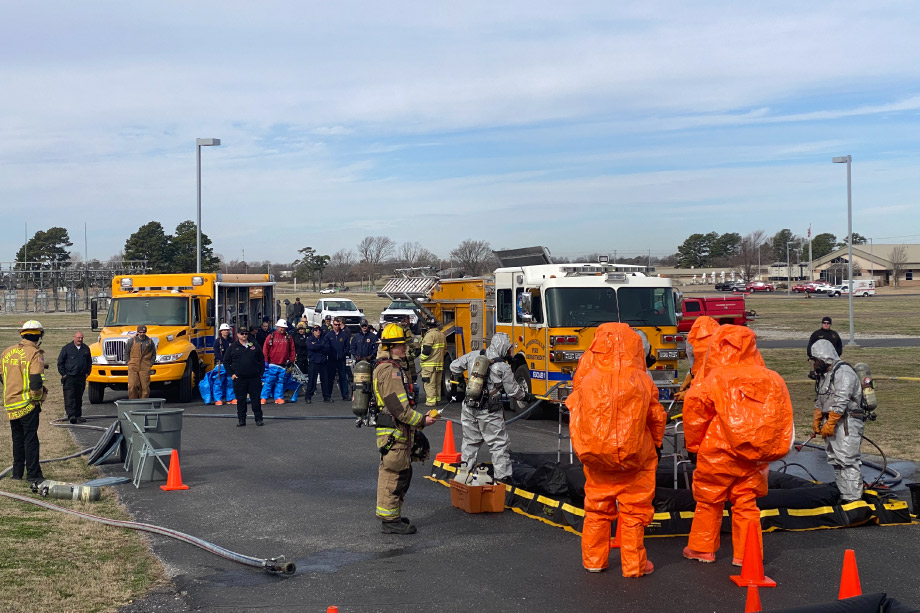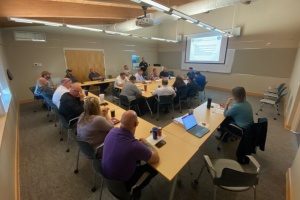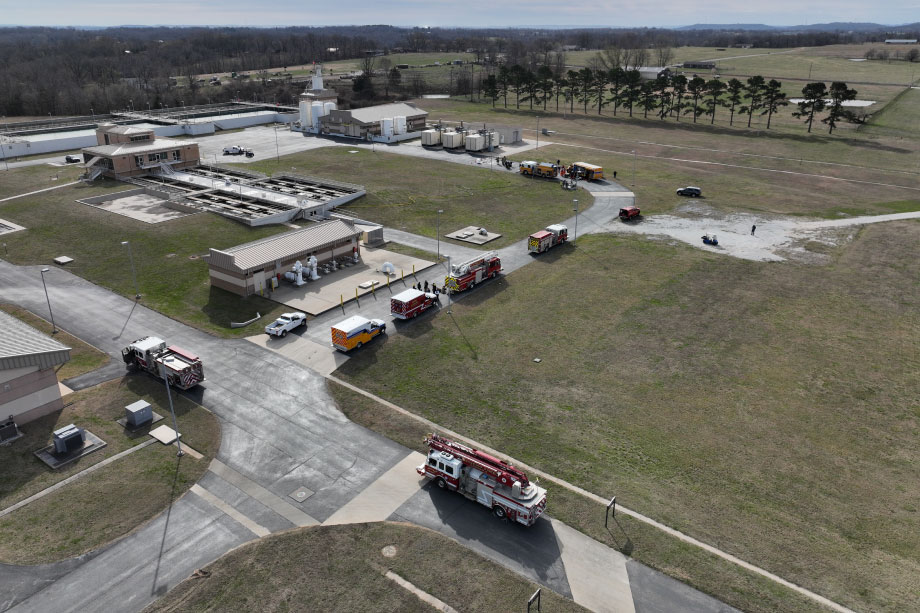
A Utility Emergency Preparedness Drill
By Mindi Dearing
Compliance Manager, Beaver Water District
Our readers are used to learning about expansion and infrastructure needs, water quality issues, and source water protection, but probably not safety. Safety measures and exercises that drinking water utilities like ours are practicing are critical. People are the most vital resource of the water industry, and we need to take the necessary steps to provide them with a safe working environment.
Many businesses conduct safety drills, but the District’s drills look a bit different. Beaver Water District (BWD) conducts annual training for all employees on the hazards of chlorine. This year we took that training to a higher level by conducting a full-scale chlorine drill. The drill included a simulated chlorine leak coordinated with emergency responders and initiation of the chlorine evacuation plan for all staff. (Emergency Preparedness and Safety are two key milestones within BWD’s Strategic Plan, so this is another example of how BWD makes sure that plan is not just another document on the shelf).
It all started with a lot of coordination with our local and regional emergency response organizations to get a tabletop exercise designed and scheduled. On October 10, 2023, BWD hosted a chlorine tabletop exercise that was developed and facilitated by Michael Waddle, the Benton County Director of Emergency Management. The following agencies, along with several BWD staff, participated in this event: Bentonville, Rogers, Lowell, and Springdale fire departments, Mercy Hospital, and Benton County dispatch. There were a total of 22 participants. This exercise allowed each organization to talk through their responsibilities in the given scenario and initiated communication about the necessary coordination for response efforts at our facility. At the conclusion of this exercise, all agreed that a full-scale drill at the BWD facility would be scheduled and conducted in the first quarter of 2024.

In the months following the tabletop drill, coordination efforts continued for selecting a date, determining who was going to take the lead for the responding agencies, and making modifications to the tabletop scenario to ensure it as realistic as possible for treatment operations at BWD.
On February 29th, 2024 (yes, it was a leap year), BWD’s drill coordination committee was waiting patiently for the drill to begin. Then, at 8:58 am, the plan was put into motion when one of our Plant Operators issued a warning over the emergency paging system about a chlorine leak onsite and initiated the evacuation process. This alert put into action two separate aspects of the drill that were being evaluated simultaneously: 1) staff evacuation and 2) the response, identification, medical attention, and resolution of the potential chlorine leak by emergency responders.

Approximately 35 emergency responders from five different agencies and essential BWD staff who are responsible for critical roles in our Emergency Response Plan jumped into action when the alert was given. This was also BWD’s first time using a newly implemented mass communication tool to which we had recently subscribed. Having this tool in place meant we had at least three different means of alerting staff which allowed for a quicker response time and accounting for the safety of all staff.
Another factor that is critical for considering when conducting a drill like this is to make sure that you proactively communicate with the public. We had a message prepared and as soon as the evacuation order was given, the message was posted to various social media platforms. The news stations were also contacted prior to the start of the drill asking them not to come out to the plant if they received calls about multiple emergency vehicles at the water treatment plant and that we would provide them with information for a story after the event.

What were the results of this drill? Overall, it was a huge success. Did we learn anything from it? Absolutely! The purpose of having such a drill is to find where your gaps or weaknesses are, so that improvements can be made, and we are doing just that. An invaluable benefit of the drill was developing and enhancing the relationships with the local and regional emergency responders in our area. We want to make sure that they are aware of any potential hazards we have at our facility, and to let them know how grateful we are for all that they do!
While we are busy protecting public health by providing safe drinking water, complying with regulations, expanding our infrastructure, protecting Beaver Lake, and planning for the future of BWD and the economic growth of Northwest Arkansas, we still take the time to invest in creating and testing safety procedures. Protecting the employees who take care of over 375,000 residents and businesses of NWA is a top priority!
